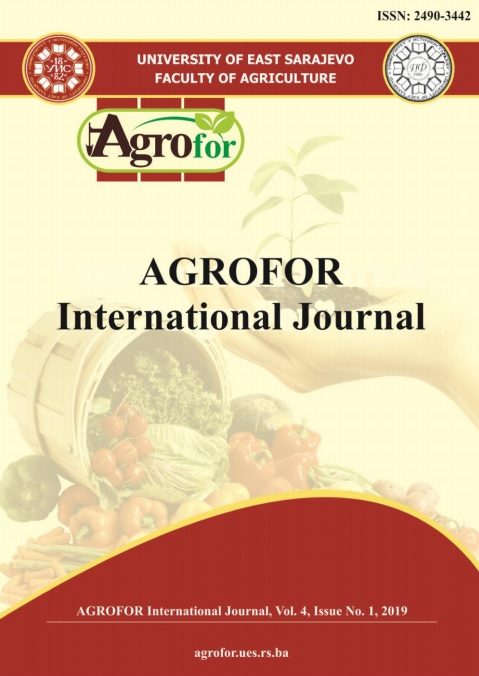STUDY OF THE COMPRESSION BEHAVIOR OF SUNFLOWER SEEDS USING THE FINITE ELEMENT METHOD
DOI:
https://doi.org/10.7251/AGRENG1901128BAbstract
It is known that the phenomena that occur during compression of sunflower seeds
are very complex. Comprehension of these phenomena is important for increasing
the performance of the equipment in the vegetable oil industry, both for the
cracking of shells and for the grinding of kernels. Also for the pressing of oilseed
materials it is helpful to understand the compression behavior of sunflower seeds.
The major objective of this work is to find an easy way of highlighting how the
stresses and deformations propagate in sunflower seeds kernels and shells during
the compression process, with the aim of optimizing the energy consumption
required for the mechanical processing. Therefore, now days there is and we can
use the finite element method. This method is the most advanced engineering tool
for computing numerical and mathematical modeling of complex phenomena
involving the propagation of stress and strain fields in continuous media. In this
paper a two-dimensional FEM model for analyzing sunflower seeds subjected at
compression by axial and lateral directions is presented. For experimental
validation of FEM model we made uniaxial compression tests on sunflower seeds,
using a Hounsfield/Tinius Olsen unit for mechanical tests, H1KS model. The
models used in this work highlight that the orientation of the seeds is very
important. There are situations when it is desirable that the stresses to be higher (at
shelling, grinding, pressing, etc.) or situations when it is desirable that the stresses
to be smaller (at transport, storage, etc.).

